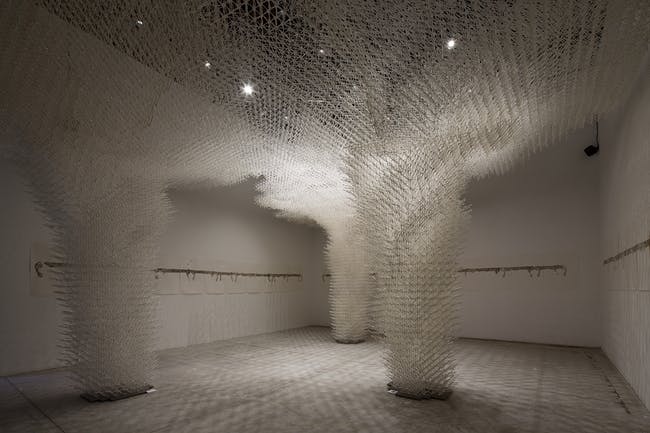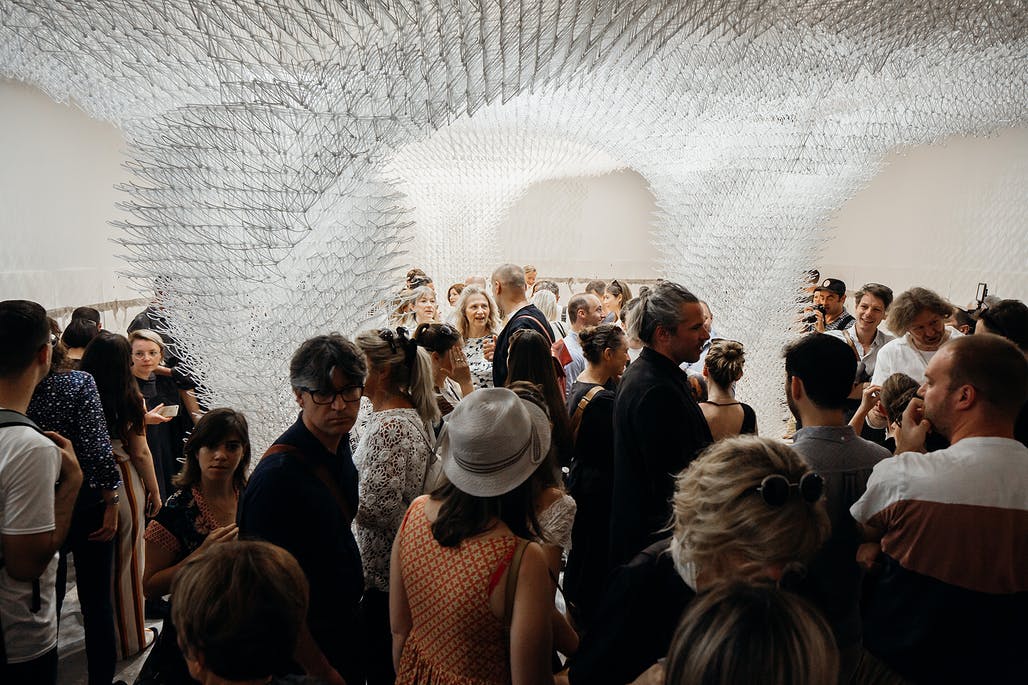Architects Alisa Andrašek and Bruno Juričić have designed the “Cloud Pergola / The Architecture of Hospitality”, a larger-than-life art display that some are considered the largest and most complex 3D printed structures in the world. It’s currently on display at the 2018 Venice Architecture Biennale.
One of the largest and most intricate 3D printed structures is now on display for the 2018 Venice Architecture Biennale. Presented on behalf of the Croatian Pavilion, the “Cloud Pergola / The Architecture of Hospitality” showcases how the modern environment and automated design is impacting 21st century architecture and design.
The main structure, dubbed the “Cloud Drawing”, was designed in collaboration by architects Alisa Andrašek and Bruno Juričić. This piece was inspired by a traditional pergola, a classic archway that can be found in gardens and parks. The 661-pound-heavy structure is made with 3D printed biodegradable plastic, featuring three connected interventions that form a complex work of art. The architects employed the help of Arup, the UK design and engineering firm, and Ai Build, a 3D printing company, to manufacture this grandiose structure.

“I wanted the pavilion to push the boundaries of the aesthetics, spatial and tectonic consequences of emerging paradigms of augmented intelligence at the cross-over between architecture, art, and engineering by presenting a full-scale pergola structure made using 3D robotic fabrication and automated design protocols. Cloud Pergola […] as a paradigm for what architecture should stand for in the 21st century,” explained Juričić.
To combine the more than 100,000 extruded elements, Arup offered the structural guidance for the design. Ai Build then contributed by developing an assembly sequence to ensure that the Cloud Pergola / The Architecture of Hospitality could be safely transported between different exhibitions.

The “Cloud Pergola / The Architecture of Hospitality” is a Mathematized Cloud
The designers of the project are calling it a “mathematized cloud” design that “integrates site-specific environmental data into a synthesis of form, figure, posture, tectonics, porosity, and light effect”.
The installation measures 3.3 meters high and easily fills an area of around 58 square meters. Architectural critic Bart Lootsma reviewed the pavilion as a pioneer in the field of combining robotics with computing in the architectural field.
“It is admired beyond technological innovation, offering an elegant, ephemeral and poetic experience. Isn’t a pergola, in its function of filtering the sun, ideally a simulation of clouds anyway? I hope I may encounter such a breezy structure or maybe even a bigger one on a hot day on the Croatian coast one day,” Lootsma said.
Meanwhile, artist Vlatka Horvat is presenting a series of acrylic wash drawings called “To Still the Eye”. Further installations at the event include the “Ephemeral Garden” by artist Maja Kuzmanović, which explores spaces where “human and non-human voices intermingle” through an audio installation.

Source: Archinect
License: The text of "Larger-Than-Life 3D Printed Architectural Structure on Display at 2018 Venice Biennale" by All3DP is licensed under a Creative Commons Attribution 4.0 International License.